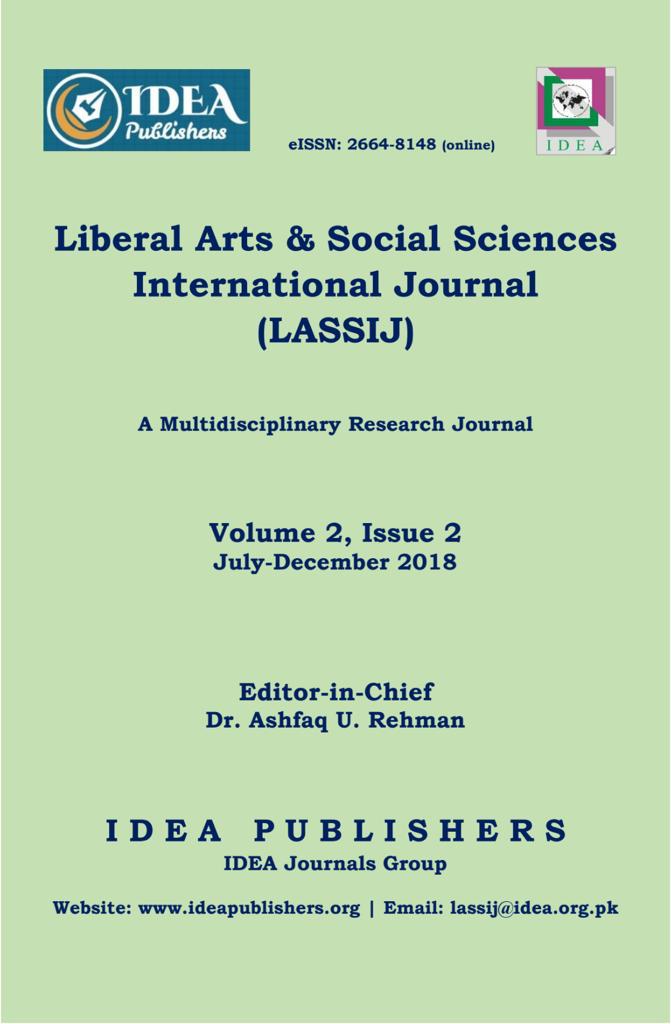Iranian-Saudi Strategic Competition in the Middle East: An Analysis of the Arab Spring
DOI:
https://doi.org/10.47264/idea.lassij/2.2.7Keywords:
Saudi-Iran Rivalry, Iran-Iraq Relations, Syrian Crisis, Gulf States, Persian GulfAbstract
The major regional players in Mideast, including Iran and Saudi Arabia always intervened in politics of neighbouring countries with different political strategies. This study explores factors that played key role in changing their strategies towards the regional politics. The research is helpful to know dynamics of Iranian and Saudi relations keeping in view the US factor. The research is helpful in assessing certain political objectives of both countries. The paper tries to examine recent gulf between the status of both countries in relation with the hindrances and possibilities that lies between them. The foreign policies and political situation of both countries is leading towards a greater change in Mideast region. The growing relations and foreign policies of these countries have certain objectives and due to globalisation, no country can live in isolation. This research provides a clear picture of recent gulf political situation which is leading toward a great change in scenario. Having different ideologies, the two important countries of Middle East have completely different priorities and objectives for the regional peace and stability. Therefore, this qualitative study is helpful in determining the objectives of both states towards resolving the political unrest and security issues in the Middle East.
References
Alhassen, M. (2010). Please Reconsider the Term ‘Arab Spring.’ Available at: http://www.huffingtonpost.com/maytha-alhassen/please.html
Amiri, R. E., Samsu, K. H. B. K., & Fereidouni, H. G. (2011). The Hajj and Iran’s foreign policy towards Saudi Arabia. Journal of Asian and African Studies, 46(6), 678-690. https://doi.org/10.1177%2F0021909611417546
BBC News (2010, May 05). New US warning to Syria on Scuds. Retrieved from; http://news.bbc.co.uk/2/hi/middle_east/8653817.stm
BBC News (2016, March 11). Syria: The story of the conflict. Retrieved from; https://www.bbc.com/news/world-middle-east-26116868
Cordesman, H. A., & Kleiber, M. (2007). Iran’s Mili¬tary Forces and War fighting Capabilities: The Threat to the Northern Gulf. Westport.
Doran, M. S. (2011). The Heirs of Nasser: Who Will Benefit from the Second Arab Revolution? Foreign Affairs 90(3), 17-25. https://www.jstor.org/stable/23039403.
Fatima, N., Zehraa, S., & Malik, M. S. (2017). Saudi Arabia, Iran and Middle East: A Dilemma. Global Political Review, 2(1), 72-80. https://ideas.repec.org/a/aaw/gprjrn/v2y2017i1p72-80.html
Freedman, L., & Karsh, E. (1993). The Gulf Con¬flict 1990-91. Princeton, NJ: Princeton University Press.
Furtig, H. (2006). Iran Rivalry with Saudi Arabia between the Gulf Wars. Ithaca Press.
Grumet, T. R. (2015). New Middle East Cold W New Middle East Cold War: Saudi Arabia and Iran's Rivalry. Master thesis, Faculty of the Joseph Korbel School of International Studies, University of Denver. https://digitalcommons.du.edu/cgi/viewcontent.cgi?article=2027&context=etd
Heydarian, R. J. (2010, August 6). Iran-Saudi Relations: Rising Tensions and Growing Rivalry. Foreign Policy in Focus. https://fpif.org/iran-saudi_relations_rising_tensions_and_growing_rivalry/
Hill, P. (2011, April 11). War-Weary Iraq sees economic rebound. The Washington Times. https://www.washingtontimes.com/news/2011/apr/10/war-weary-iraq-sees-economic-rebound/
Hodeib, M. & Lakiss, H. (2011, January 20). Window of Hope opens in Lebanon crisis. Daily Star.
Jones, S. G. (2013). The Mirage of the Arab Spring: Deal with the Region you have, not with the Region you want. Foreign Affairs, January/February 2013. Retrieved from, https://www.foreignaffairs.com/articles/syria/2012-12-03/mirage-arab-spring.
Kaye, D. D., & Wehrey, F. (2011, July-August). Arab Spring, Persian Winter: Will Iran Emerge the Winner of the Arab Revolt? Foreign Affairs 90(4), 183-188. https://www.jstor.org/stable/23039620
Morgan, A. D. (2011, May 09). Bahrain to Ease Restraints. Wall Street Journal.
Muir, J. (2003, January 17). Iran’s Mixed Feelings on Looming War. BBC News: World Edition.
Presse, A. F. (2010, May 1). Iran warns Israel against attack¬ing Syria. Gulf Research Centre 351-354.
Riedel, B. (2010, December). The Mideast after Iran Gets the Bomb. Current History. 370-375.
Ryan, C. R. (2014). Jordanian Foreign Policy and the Arab Spring. Middle East Policy, 21(1), 144-153. https://libres.uncg.edu/ir/asu/f/Ryan_Curtis_2014_RECAPP_Jordanian%20Foreign%20Policy.pdf
Seele, P. (1988). Asad: The Struggle for the Middle East, Berkeley, and Los Angeles. CA: University of California Press, 1988, Chap. 21.
Shadid, A. (2009, October 2). Maliki Creates Coalition to Compete in Iraqi Vote. Washington Post.
The Daily Star (2011, August 25). Saudi Arabia arrests 164 anti-Syrian protesters. Retrieved from: https://www.dailystar.com.lb//News/Middle-East/2011/Aug-25/147136-saudi-arabia-arrests-164-anti-syrian-protesters.ashx
Tilghman, A. (2011, January 24). Experts: Iraq Air Force Unready. Défense News.
Torchia, C. (2011, April 28). Turkey urges Syria to stop crackdown. Associated Press.
Washington Post (2011, August 31). Iran: Parliament Speaker to visit North Korea Sunday, underlining close ties.
Wehrey, F., Karasik, T. W., Nader, A., Ghez, J. J., & Hansell, L. (2009). Saudi Iranian Relations since the Fall of Saddam: Rivalry, Cooperation, and Implications for US Policy. RAND Corporation.
Downloads
Published
How to Cite
Issue
Section
License
Copyright (c) 2018 Sania Zehraa, Noor Fatima, Noor Ullah Khan

This work is licensed under a Creative Commons Attribution-NonCommercial 4.0 International License.
Please click here for details about the LASSIJ's Licensing and Copyright policies.















